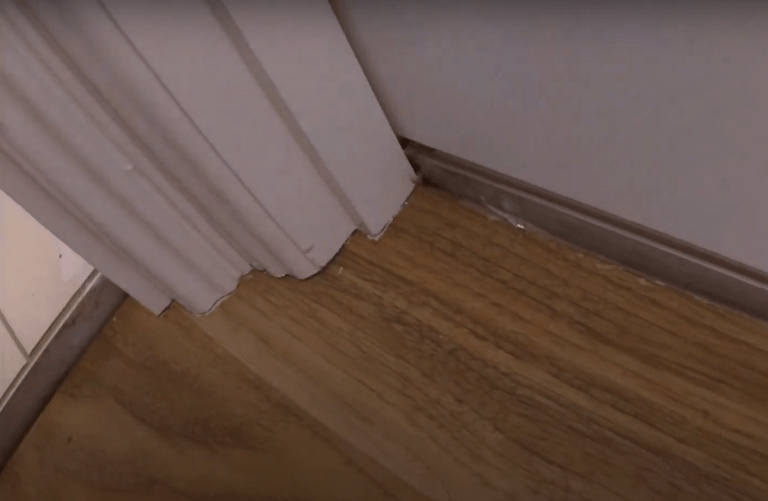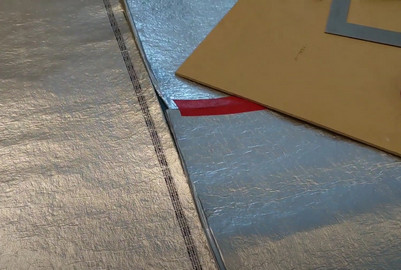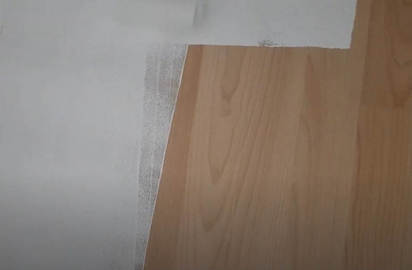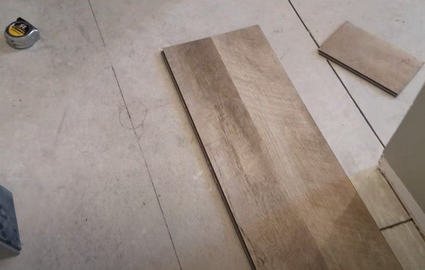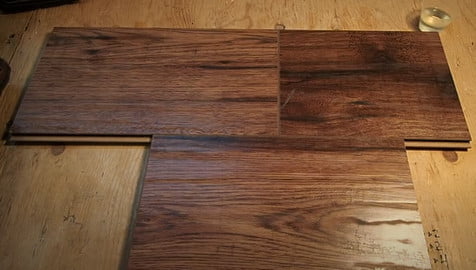Unlocking the Perfect Laminate Flooring Project: From Packaging to Installation
Unveil the secrets to a successful laminate flooring project. From understanding packaging to calculating quantities, we guide you through every step for a perfect fit!

When my husband and I decided to renovate our home, we knew we wanted to upgrade the flooring in several rooms. After researching various options, we settled on laminate flooring due to its durability, affordability, and ease of installation.
However, as we began to plan out our project, we realized we needed to determine how many boxes of laminate flooring we would need to purchase and how many would fit on each pallet.
Understanding the packaging of laminate flooring can seem overwhelming at first, but it’s essential to ensure you purchase the correct amount for your project and don’t over or underbuy. Factors such as box size, thickness of the laminate flooring, and manufacturer packaging guidelines can all affect how many boxes are on a pallet.
In this article, we’ll break down each of these factors and provide a methodical approach to determining how many boxes of laminate flooring are on a pallet for your project.
Understanding Laminate Flooring Packaging
You’re probably wondering how they package this beautiful flooring for easy transport and storage. Well, let’s dive in and explore the various packaging options available for laminate flooring.
Packaging standards for laminate flooring vary depending on the manufacturer, but most companies adhere to a standard of 8-10 boxes per pallet. This standard ensures pallet weight distribution is even, reducing the risk of damage to the flooring during transport.
The boxes themselves are usually made of cardboard, and come in varying sizes depending on the manufacturer and the amount of flooring in each box. Some boxes may contain as little as 8 square feet of flooring, while others may contain up to 30 square feet. The boxes are then stacked on top of each other on the pallet, with the heaviest boxes on the bottom and the lighter boxes on top. This ensures that the pallet weight distribution is even and the flooring is protected during transport.
In addition to the standard 8-10 boxes per pallet, some manufacturers offer bulk packaging options. These options allow for larger quantities of flooring to be shipped on a single pallet, reducing shipping costs and time. Bulk packaging options can include up to 40 boxes per pallet, with each box containing up to 30 square feet of flooring.
Regardless of the packaging option chosen, laminate flooring is carefully packaged to ensure it arrives at its destination in excellent condition.
Factors Affecting the Number of Boxes on a Pallet
You’ll notice that the number of factors affecting the quantity of product on a pallet includes the size of the product, the weight limit of the pallet, and the height of the product.
The pallet weight is an essential factor that determines how many boxes of laminate flooring can be placed on a pallet. Shipping requirements also influence the number of boxes that can be transported on a single pallet.
Firstly, the size of the product is crucial in determining the number of boxes that can fit on a pallet. The bigger the box, the fewer boxes will fit on a pallet. Laminate flooring boxes come in different sizes, and this affects the number of boxes that can fit on a pallet.
Manufacturers often package their laminate flooring in boxes of varying sizes to cater to different market segments.
Secondly, the weight limit of the pallet is another factor that determines the number of boxes of laminate flooring that can be placed on a pallet. Pallets have a weight limit that cannot be exceeded to avoid damage to the product during transportation. The weight of the boxes of laminate flooring must be taken into consideration when palletizing them.
Lastly, the height of the product also affects the number of boxes of laminate flooring that can be stacked on a pallet. The height of a pallet is often limited, and if the boxes exceed the height limit, they can become unstable during transportation, leading to damage. Therefore, the height of the boxes must be taken into consideration when palletizing them to ensure safe transportation.
In summary, the quantity of laminate flooring boxes that can be placed on a pallet is determined by various factors, including the size of the boxes, the weight limit of the pallet, and the height of the product. These factors play a vital role in ensuring safe transportation of the product from the manufacturer to the customer.
Box Size and Thickness of Laminate Flooring
When it comes to transporting laminate flooring, it’s important to consider the size and thickness of the individual boxes.
Laminate flooring dimensions can vary depending on the manufacturer and style. Some boxes may contain enough flooring to cover a smaller room, while others may have enough to cover a larger space. It’s important to calculate your flooring requirements before purchasing to ensure you have the correct number of boxes for your project.
The thickness of laminate flooring can also impact the number of boxes on a pallet. Thicker flooring may take up more space in a box, reducing the number of boxes that can fit on a pallet. This can also impact the weight of the boxes, making them heavier and potentially reducing the number of boxes that can be safely transported.
Thinner flooring, on the other hand, may allow for more boxes on a pallet and lighter weight for easier transportation. Overall, when considering how many boxes of laminate flooring are on a pallet, it’s important to take into account the size and thickness of the individual boxes.
This can impact the number of boxes that can fit on a pallet, as well as the weight and overall transportation logistics. By carefully calculating your flooring requirements and understanding the dimensions and thickness of the laminate flooring you plan to purchase, you can ensure a successful and efficient flooring project.
Manufacturer Packaging Guidelines
To ensure your laminate flooring arrives safely and without damage, it’s crucial to follow the manufacturer’s packaging guidelines. These guidelines are designed to ensure packaging durability and shipping restrictions are met, so that your laminate flooring is protected during transit.
The manufacturer’s guidelines will often specify the number of boxes of laminate flooring that are on a pallet, along with other important information. The number of boxes of laminate flooring on a pallet will depend on the manufacturer’s packaging guidelines. Some manufacturers may package their laminate flooring in boxes of 8 or 10, while others may package it in boxes of 12 or 14. The number of boxes on a pallet will vary depending on the size and thickness of the flooring, so it’s important to check the manufacturer’s guidelines before ordering.
In addition to specifying the number of boxes on a pallet, the manufacturer’s packaging guidelines may also include information about pallet weight, pallet size, and other shipping requirements. Following these guidelines will ensure that your laminate flooring arrives in good condition and is ready for installation.
If you have any questions about packaging or shipping, be sure to contact the manufacturer or your supplier for more information.
Determining the Number of Boxes on a Pallet for Your Project
Figuring out how many boxes of laminate flooring can fit on a pallet for your project can seem overwhelming, but with a little research, you’ll be able to determine the right amount to order.
Calculating the quantity of boxes on a pallet depends on the size and weight of the boxes, the size of the pallet, and the weight limit of the pallet. It’s essential to get these factors right to avoid any issues with shipping and handling.
To determine the number of boxes on a pallet, start by calculating the maximum weight limit of the pallet. Then, calculate the weight of each box and determine how many boxes can fit on the pallet without exceeding the weight limit.
You can use a scale to weigh the boxes and a tape measure to measure the dimensions of the boxes and the pallet. Once you have the weight and size measurements, you can use an online calculator or a simple formula to calculate the number of boxes that will fit on the pallet.
It’s important to note that the weight and size of the boxes may vary depending on the manufacturer. Therefore, it’s crucial to check the packaging guidelines provided by the manufacturer before placing an order.
By following these steps, you can determine the exact number of boxes of laminate flooring that can fit on a pallet for your project, ensuring a smooth and hassle-free shipping and handling process.
Conclusion
So there you have it – the answer to the question, ‘how many boxes of laminate flooring are on a pallet?’
It’s not a straightforward answer, unfortunately. It depends on factors such as the size and thickness of the boxes, as well as the manufacturer’s packaging guidelines.
However, armed with this knowledge, you can make a more informed decision when it comes to ordering laminate flooring for your project.
Remember to take the time to measure your space carefully and consider any waste or extra pieces you may need. This will help you determine how many boxes of laminate flooring you need to order, and therefore how many will be on the pallet.
With a little bit of careful planning, you can ensure that you have enough laminate flooring to complete your project without any surprises or delays.
